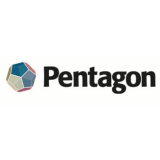This informal CPD article ‘Exploring the benefits of IoT in Engineering Document Management Systems’, was provided by Pentagon Solutions, a leading technology and consultancy partner in the UK & Ireland for companies who strive to gain efficiencies in their business by digitalisation of their assets and processes.
In the engineering sector, the management of documents is crucial to ensuring that projects are completed efficiently, accurately, and within compliance regulations. Engineering Document Management Systems (EDMS) handle a wide variety of documents, including technical drawings, design specifications, and project management records.
As the complexity of projects grows, so does the need for more advanced tools to manage these documents. The integration of the Internet of Things (IoT) into EDMS offers transformative benefits, enhancing everything from security to workflow automation. This article explores how IoT is transforming engineering document management systems and what benefits it brings to the table.
1. Enhanced Security for Sensitive Engineering Data
Engineering projects often involve sensitive data, including proprietary designs, technical specifications, and confidential client information. IoT-enabled security measures can significantly enhance the protection of this data. For example, IoT sensors can be deployed to monitor access points in both physical and digital environments. These sensors can detect unauthorised attempts to access secure areas or files, triggering automatic lockdowns or alerts to security personnel. Additionally, IoT devices can continuously monitor system health and vulnerabilities, providing real-time insights that help in pre-emptively addressing potential security threats.
2. Real-Time Document Tracking and Asset Management
Engineering projects require precise management of a wide range of documents and physical assets. IoT can streamline this process by enabling real-time tracking of both digital documents and physical items like blueprints or models. Radio Frequency Identification (RFID) tags and IoT sensors can be attached to physical documents or assets, allowing the EDMS to provide up-to-date location information. This capability is particularly valuable in large-scale engineering projects where multiple teams may need to access the same documents or assets. It minimises the risk of lost or misplaced items and ensures that all team members can quickly access the resources they need.
3. Workflow Automation for Complex Engineering Processes
Engineering projects often involve complex workflows that require the coordination of various teams, disciplines, and stakeholders. IoT can play a critical role in automating these workflows within an EDMS. For instance, smart devices can automatically categorise and route documents based on project phase or engineering discipline, ensuring that the right team members receive the correct documents at the right time. Moreover, IoT can facilitate the automatic generation of alerts or notifications when documents require review, approval, or updates, reducing bottlenecks and keeping projects on schedule.
4. Facilitating Remote Collaboration and Site Management
With engineering teams often spread across multiple locations—whether it's different offices, remote sites, or even countries—IoT can enhance remote collaboration and site management. By integrating IoT with cloud-based EDMS, engineering teams can access and work on documents in real-time, regardless of their physical location. IoT devices can ensure that all participants are working with the latest versions of documents, reducing the risk of errors due to outdated information. This capability is especially useful for remote project sites, where access to up-to-date documents can be crucial for decision-making and on-site adjustments.
5. Optimisation of Engineering Storage and Retrieval Systems
Engineering projects generate a vast amount of documentation, from initial designs to final reports. IoT can optimise the storage and retrieval of these documents by creating smart storage systems. For example, IoT-enabled shelving can automatically adjust based on the size and volume of documents, ensuring efficient use of storage space. Additionally, IoT sensors can monitor storage conditions—such as temperature and humidity—that are critical for the preservation of certain engineering documents or models. This not only protects valuable assets but also ensures that documents are easy to retrieve when needed.
6. Data Analytics for Improved Project Outcomes
The data generated by IoT devices within an EDMS can be invaluable for improving project outcomes. By analysing this data, engineering firms can gain insights into document usage patterns, project timelines, and workflow efficiencies. For instance, IoT can track how frequently certain documents are accessed, which can indicate their importance or identify bottlenecks in the project. These insights can be used to refine processes, allocate resources more effectively, and make informed decisions that improve project efficiency and reduce costs.
7. Sustainability in Engineering Projects
Sustainability is an increasingly important consideration in engineering projects. IoT can contribute to this by reducing the environmental impact of document management. For example, IoT-enabled systems can promote digital workflows over paper-based processes, reducing the need for physical document storage and minimising paper waste. Additionally, IoT sensors can optimise the energy efficiency of document storage facilities, ensuring that these spaces consume less power and operate more sustainably. Over time, these efforts can help engineering firms reduce their carbon footprint and contribute to broader environmental goals.
Conclusion
The integration of IoT into Engineering Document Management Systems offers significant benefits that address the unique challenges of managing complex engineering projects. From enhanced security and real-time tracking to workflow automation and sustainability, IoT-enabled EDMS is poised to change the way engineering firms handle their critical documents. As IoT technology continues to evolve, its applications within engineering document management are likely to expand, offering even more innovative solutions that will keep engineering projects on track, secure, and efficient. Embracing IoT in EDMS not only future-proofs document management processes but also empowers engineering teams to achieve better project outcomes.
We hope this article was helpful. For more information from Pentagon Solutions, please visit their CPD Member Directory page. Alternatively, you can go to CPD Industry Hubs for more articles, courses and events relevant to your Continuing Professional Development requirements.













